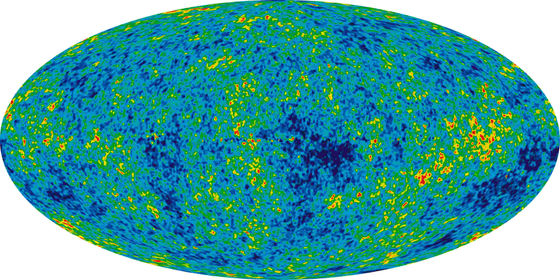Cosmology is at a turning point, and in just a few years, 'humanity may encounter new physics,' says astrophysicist

Discrepancies between theories about the universe and actual observational records, which have been dismissed as observational errors, are gradually becoming clearer thanks to cutting-edge observational technology such as the James Webb Space Telescope. Experts have suggested that the full extent of this contradiction, which has been a topic of debate among astronomers around the world for many years, is now clear and that the time is fast approaching when humanity will be forced to reconsider its existing view of the universe.
Cosmology is at a tipping point – we may be on the verge of discovering new physics
The ΛCDM model , the most influential standard model in current cosmology, states that the universe is made up of 68.3% dark energy, 26.8% dark matter, and 4.9% normal atoms. This is a very accurate result derived from detailed observational data of the cosmic microwave background radiation (CMB), also known as the afterglow of the Big Bang.
The ΛCDM model is in good agreement with observations of the large-scale structure of the universe and the distribution of galaxies around Earth. It also perfectly explains the amount of helium and deuterium produced in the first few minutes of the universe's birth, as well as the state of the early universe as suggested by the CMB. This has led to the model being called the 'concordance model.'

However, in recent years, observational results that contradict this model have been reported, calling into question the validity of the theory that has been built up over a long period of time.
One issue at the center of the controversy is
This contradictory result, known among scientists as 'tension,' has previously been explained as an error in the observations caused by the combination of Cepheid light with light from other stars.
However, observations with the James Webb Space Telescope, which can accurately distinguish between the light of the target celestial body and other light, confirmed that the Hubble Space Telescope's observations were not in error.
James Webb Space Telescope shows that the 'expansion rate of the universe' observed by the Hubble Space Telescope was correct - GIGAZINE

The outcome of this suddenly rekindled debate, known as the ' Hubble tension ,' is unknown at the time of writing.
Astronomers are currently trying to derive a precise value for the Hubble constant using the light from two types of stars called the tip of the red giant branch (TRGB) and the J region asymptotic giant branch (JAGB) .
However, while one group reported that the values for the two stars are very close to those predicted by cosmological models, another group pointed out that the observations still contain discrepancies, so the matter remains unconcluded.
The good news is that we may have an answer to this question as early as 2025, says Andrea Font, a professor of theoretical astrophysics at Liverpool John Moores University in the UK.

Font said it's possible to find an even more accurate estimate of the Hubble constant by improving accuracy, for example by using data from more distant celestial bodies, or by measuring ripples in space-time known as gravitational waves.
If the cosmological model were to need revising, there would be no shortage of topics for discussion, as there are hundreds of detailed theoretical ideas for doing so.
One of the leading candidates is dark energy; for example, research results reported in 2024 suggested that dark energy may change over time.
Research shows that dark energy is 'evolving,' a discovery that could determine predictions about the 'end of the universe' - GIGAZINE

Furthermore, Font said, more dark energy could be added to the model to speed up the expansion of the universe in the early or late stages, or alternatively, the way gravity behaves on the large scales of the universe could be modified.
Some people are also of the opinion that we should abandon the assumption of the current model that the universe is isotropic, i.e. that 'it is homogeneous no matter which direction it is observed in and there are no special places in the universe that are different from other places,' and some are proposing a rethinking of the general theory of relativity.
It is not yet clear whether the accuracy of the Standard Model will be proven once again, or whether there will be a paradigm shift comparable to the discovery of the accelerating expansion of the universe in the 1990s, but either way, cosmology is approaching a turning point.
'Many of these ideas will eventually end up in the museums of curiosities in the minds of theorists, but in the meantime they are fertile ground for the development of new physics,' Font said. 'In the next few years, powerful data from the James Webb Space Telescope, the Dark Energy Spectroscope, the Vera Rubin Observatory under construction in Chile, and the European Space Agency's Euclid Space Telescope will help us find the answers we have long sought.'
Related Posts:
in Science, Posted by log1l_ks





